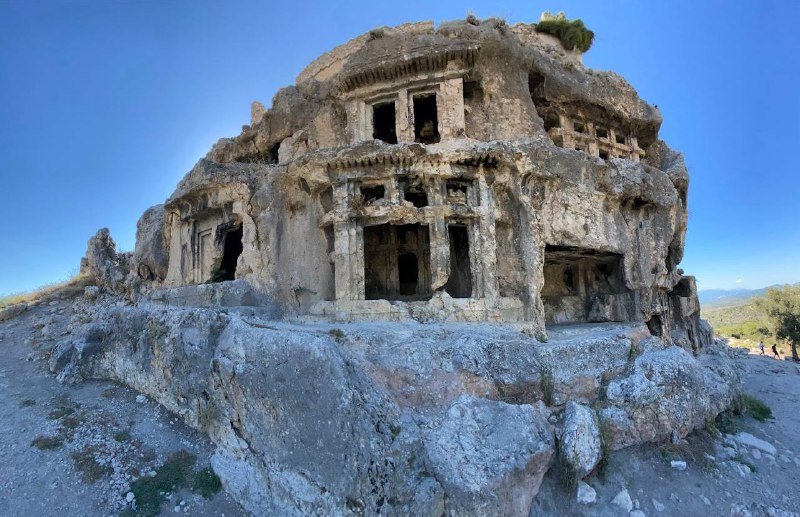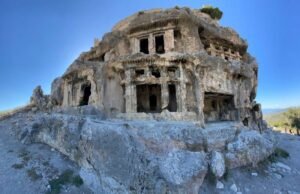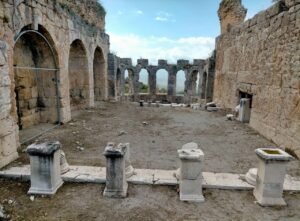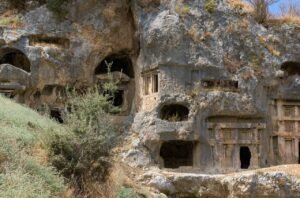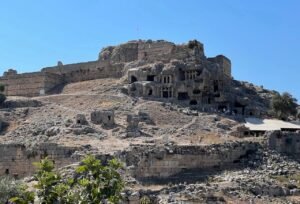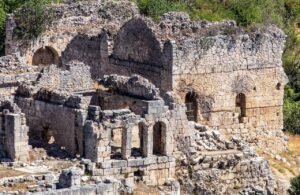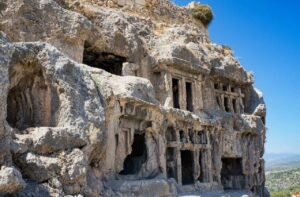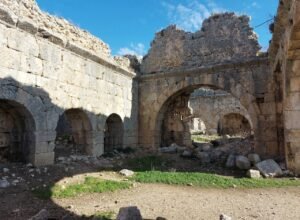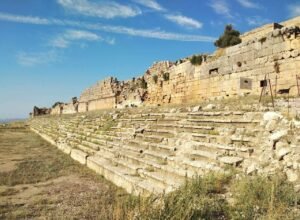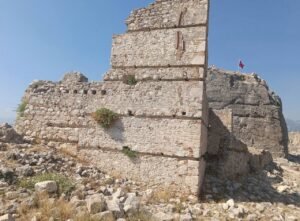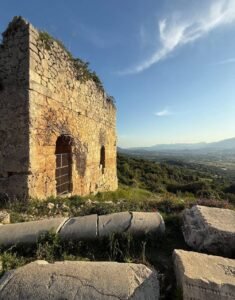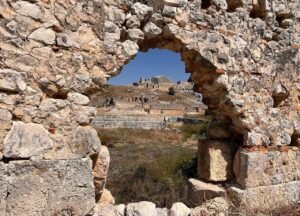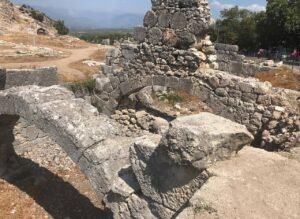Description
Discover the Timeless Majesty of Tlos Ancient City – Muğla, Turkey
Tucked away in the lush hills of southwestern Turkey, the ancient city of Tlos offers a captivating glimpse into the layered history of Lycia. Located in the modern province of Muğla, near Fethiye, Tlos is one of the oldest and most important cities of the Lycian Federation. With its majestic rock tombs, a panoramic acropolis, and a blend of architectural styles that span millennia, Tlos promises an unforgettable journey into the heart of antiquity.
A City Steeped in History
Tlos has a history stretching back over 4,000 years, making it one of the longest continuously inhabited settlements in the region. First settled in the Bronze Age, it became a powerful city in Lycian times, flourishing under Roman, Byzantine, and eventually Ottoman rule. Its strategic position atop a hill overlooking the Xanthos Valley allowed it to control important trade routes and agricultural lands.
The city's name is linked to the mythological hero Bellerophon, who is said to have lived here with his winged horse Pegasus. According to legend, Bellerophon tamed Pegasus at Tlos and defeated the monstrous Chimera. This mythological connection adds a mystical charm to the already rich cultural backdrop of the site.
Getting There
Tlos is situated approximately 42 kilometers from Fethiye, and can be reached by car or organized tour in less than an hour. The scenic drive passes through charming villages, olive groves, and orange orchards, making the journey as enjoyable as the destination. Public minibuses (dolmuş) from Fethiye to Seydikemer and onward to Yaka Village also make the site accessible for independent travelers.
The site is open year-round, and a small entrance fee grants access to the entire archaeological area.
Architectural Wonders
One of the most striking features of Tlos is its acropolis, perched dramatically atop a rocky outcrop. Visitors can hike to the summit for a stunning panoramic view of the surrounding mountains, valleys, and farmlands.
Rock-Cut Tombs
Carved directly into the cliff face beneath the acropolis are some of the most impressive Lycian rock tombs in the region. These tombs were reserved for nobility and often feature intricate carvings, columns, and reliefs. The Tomb of Bellerophon, adorned with a relief of the hero riding Pegasus, is the most famous among them and a must-see highlight.
Roman Theater
Tlos also features a well-preserved Roman theater built into the hillside, capable of seating approximately 5,000 spectators. Although partially damaged by earthquakes over the centuries, it still retains its grandeur and offers a vivid image of life during the Roman era.
Agora and Baths
At the foot of the acropolis lies the agora, or marketplace, once the social and economic center of Tlos. Nearby, the remains of Roman baths provide insight into the daily lives of the city’s inhabitants. These public baths were not just for hygiene, but also served as places of social gathering and relaxation.
Byzantine Basilica and Ottoman Fortress
As you ascend further, you'll come across the remains of a Byzantine basilica, evidence of Tlos’s continued importance during the Christian era. Higher still, an Ottoman-era fortress caps the acropolis, constructed by a 19th-century local chieftain named Kanlı Ali Ağa. This rare blend of Lycian, Roman, Byzantine, and Ottoman architecture makes Tlos a living museum of civilizations.
Natural Beauty Surrounding Tlos
Tlos is not only a site of historical importance but also a location of great natural beauty. Nestled in the shadow of the Akdağlar Mountains, the area is rich in flora and fauna. It is especially striking in spring when wildflowers carpet the landscape and the snow-capped peaks shimmer in the distance.
Just a short drive away, the Saklıkent Gorge offers an exciting detour. This 18-kilometer canyon, one of the longest in Turkey, is a popular destination for hiking, wading through cool waters, and enjoying lunch at riverside restaurants built on stilts.
Practical Tips for Visitors
-
Best Time to Visit: The best time to visit Tlos is during spring (April–June) and fall (September–October), when the weather is mild, and the site is not overcrowded.
-
What to Bring: Wear sturdy walking shoes, bring water, sunscreen, and a hat. The terrain can be steep and uneven, especially when exploring the upper acropolis.
-
Guided Tours: Hiring a local guide or joining a tour from Fethiye can enhance your visit with historical context and local anecdotes.
-
Facilities: Restrooms and a small café are available near the entrance, but it's best to bring some snacks or a picnic if you plan to stay for a few hours.
Cultural Insights
Tlos offers more than just ruins—it offers a connection to the spirit of the Lycian people, who valued democracy, heroism, and harmony with nature. The Lycian Federation, of which Tlos was a key member, is recognized as one of the earliest examples of a democratic union of city-states, even influencing modern political thinkers like the framers of the U.S. Constitution.
This cultural heritage, combined with the city’s mythological associations and striking architecture, creates a deep and lasting impression on all who visit.
Final Thoughts
Whether you're a history buff, an architecture enthusiast, or simply a traveler in search of authentic experiences, Tlos delivers on all fronts. Its unique combination of natural beauty, mythological resonance, and archaeological splendor makes it one of Turkey's hidden gems.
While more famous sites like Ephesus or Pamukkale draw larger crowds, Tlos offers a more serene and equally enriching journey into the past. Standing among its ancient stones, surrounded by breathtaking views and timeless legends, you’ll understand why this city has been cherished for thousands of years—and why it continues to captivate those who walk its storied paths.
Location
-
Yakaköy, Saklıkent Yolu, 48850 Fethiye/Muğla
